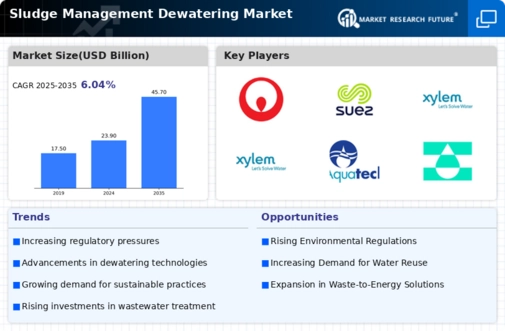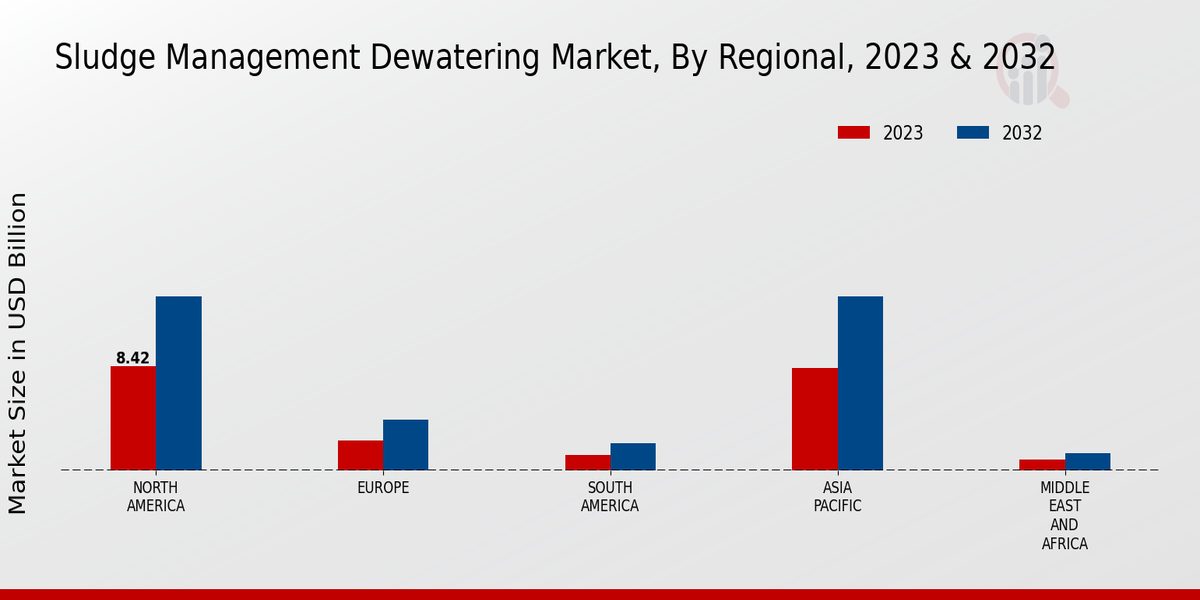Regulatory Compliance
Stringent environmental regulations worldwide compel industries and municipalities to adopt proper sludge management practices. Governments are increasingly enforcing laws that mandate the treatment and disposal of wastewater, which directly influences the Global Sludge Management Dewatering Market Industry. Compliance with these regulations often requires investment in advanced dewatering technologies to minimize environmental impact. As a result, organizations are prioritizing investments in dewatering systems to meet regulatory standards, thus driving market growth. The anticipated growth of the market to 45.7 USD Billion by 2035 underscores the importance of adhering to these regulations and the potential for innovation in this sector.
Increasing Urbanization
The rapid pace of urbanization globally drives the demand for effective sludge management dewatering solutions. As cities expand, the volume of wastewater generated increases, necessitating advanced treatment processes. The Global Sludge Management Dewatering Market Industry is poised to benefit from this trend, with the market projected to reach 23.9 USD Billion in 2024. Urban areas require efficient infrastructure to manage waste, leading to investments in dewatering technologies. This trend is particularly evident in developing regions, where population growth and industrialization exacerbate wastewater challenges, highlighting the need for sustainable solutions.
Market Growth Projections
The Global Sludge Management Dewatering Market Industry is projected to experience substantial growth over the coming years. With an estimated market value of 23.9 USD Billion in 2024, the industry is expected to expand significantly, reaching 45.7 USD Billion by 2035. This growth is indicative of the increasing need for effective sludge management solutions across various sectors. The anticipated CAGR of 6.08% from 2025 to 2035 highlights the ongoing investments in technology and infrastructure aimed at improving sludge treatment processes. This upward trend reflects the industry's response to evolving environmental standards and the growing demand for sustainable waste management practices.
Technological Advancements
Innovations in dewatering technologies are transforming the Global Sludge Management Dewatering Market Industry. Emerging technologies such as membrane filtration, centrifugation, and advanced polymer applications enhance the efficiency of sludge treatment processes. These advancements not only improve the quality of the treated sludge but also reduce operational costs. The integration of automation and real-time monitoring systems further optimizes dewatering operations. As industries seek to improve their sustainability profiles, the adoption of these technologies is likely to accelerate, contributing to a projected CAGR of 6.08% from 2025 to 2035. This trend indicates a shift towards more efficient and eco-friendly sludge management solutions.
Rising Environmental Awareness
Growing awareness of environmental issues among consumers and industries is influencing the Global Sludge Management Dewatering Market Industry. Stakeholders are increasingly recognizing the importance of sustainable waste management practices, which include effective sludge treatment and disposal. This heightened awareness drives demand for dewatering solutions that minimize environmental impact and promote resource recovery. Companies are responding by investing in technologies that align with sustainability goals, such as energy-efficient dewatering systems. As public pressure mounts for greener practices, the market is likely to witness increased investments in innovative solutions that address both environmental concerns and operational efficiency.
Industrial Growth and Waste Generation
The expansion of various industries, including food and beverage, pharmaceuticals, and manufacturing, contributes to increased sludge generation, thereby impacting the Global Sludge Management Dewatering Market Industry. As these sectors grow, the volume of wastewater produced rises, necessitating effective sludge management strategies. Industries are compelled to implement dewatering solutions to handle the byproducts of their operations efficiently. This trend is particularly pronounced in regions experiencing industrial growth, where the demand for dewatering technologies is surging. The market's growth trajectory reflects the need for robust sludge management systems to accommodate the rising waste generation from these sectors.


















